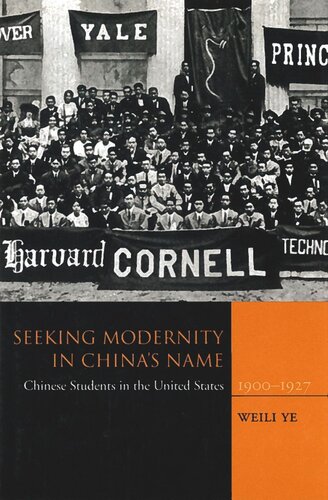

Most ebook files are in PDF format, so you can easily read them using various software such as Foxit Reader or directly on the Google Chrome browser.
Some ebook files are released by publishers in other formats such as .awz, .mobi, .epub, .fb2, etc. You may need to install specific software to read these formats on mobile/PC, such as Calibre.
Please read the tutorial at this link: https://ebookbell.com/faq
We offer FREE conversion to the popular formats you request; however, this may take some time. Therefore, right after payment, please email us, and we will try to provide the service as quickly as possible.
For some exceptional file formats or broken links (if any), please refrain from opening any disputes. Instead, email us first, and we will try to assist within a maximum of 6 hours.
EbookBell Team

4.7
36 reviewsThe students who came to the United States in the early twentieth century to become modern Chinese by studying at American universities played pivotal roles in Chinese intellectual, economic, and diplomatic life upon their return to China. These former students exemplified key aspects of Chinese "modernity," introducing new social customs, new kinds of interpersonal relationships, new ways of associating in groups, and a new way of life in general. Although there have been books about a few especially well-known persons among them, this is the first book in either English or Chinese to study the group as a whole. The collapse of the traditional examination system and the need to earn a living outside the bureaucracy meant that although this was not the first generation of Chinese to break with traditional ways of thinking, these students were the first generation of Chinese to live differently. Based on student publications, memoirs, and other writings found in this country and in China, the author describes their multifaceted experience of life in a foreign, modern environment, involving student associations, professional activities, racial discrimination, new forms of recreation and cultural expression, and, in the case of women students, the unique challenges they faced as females in two changing societies.